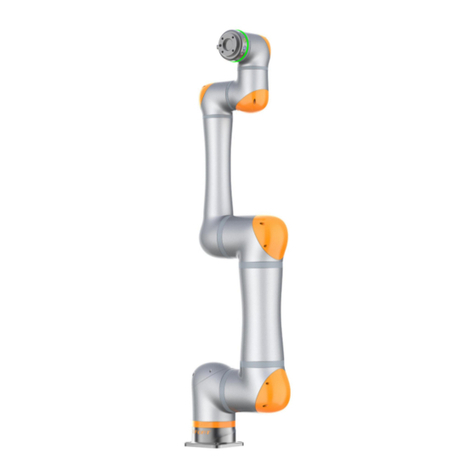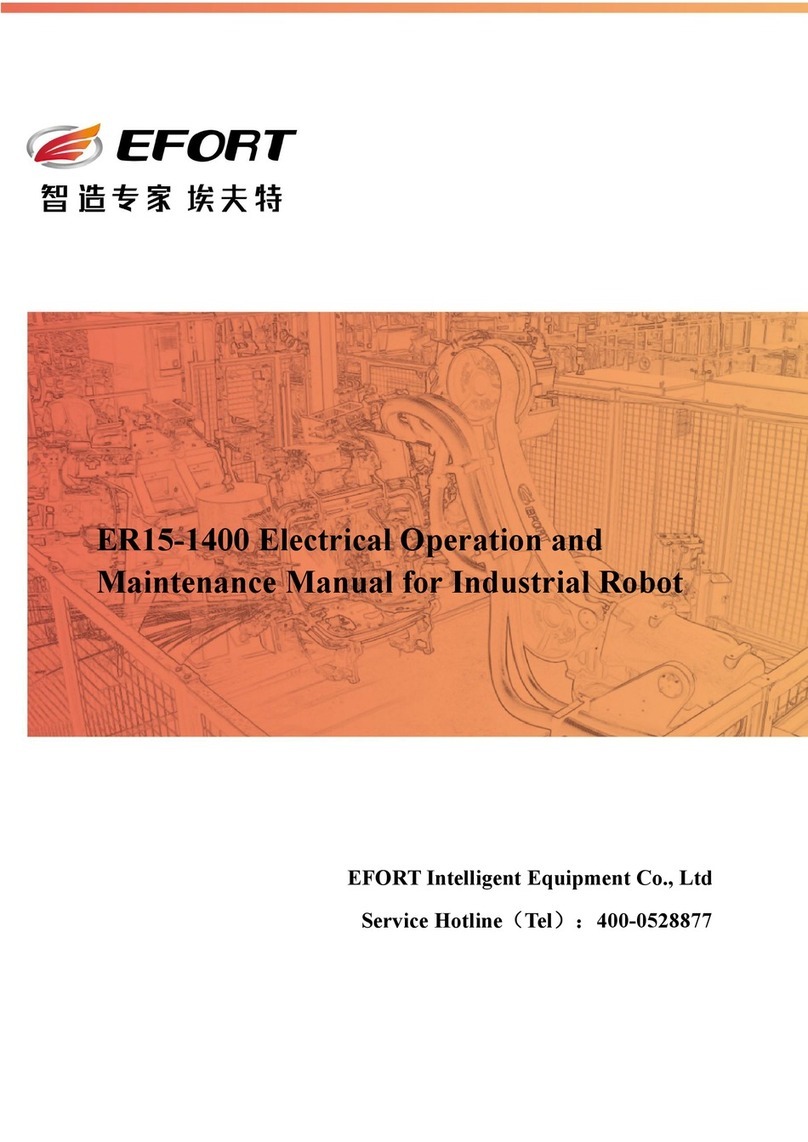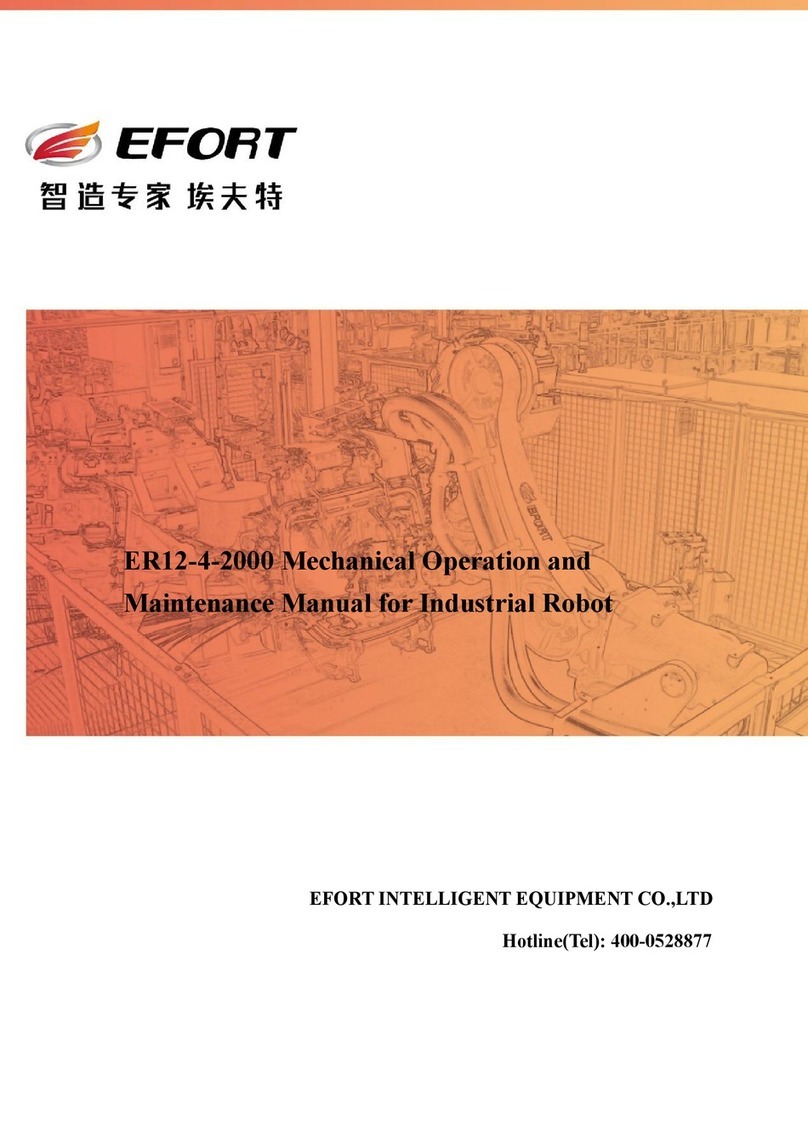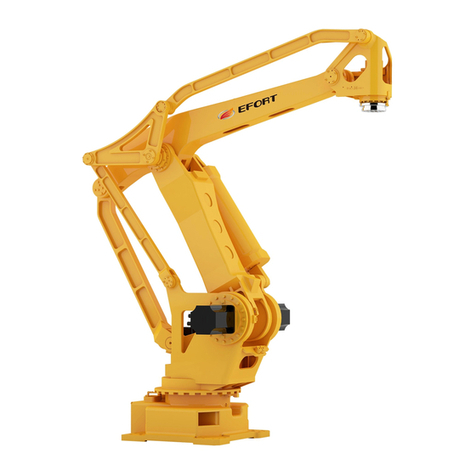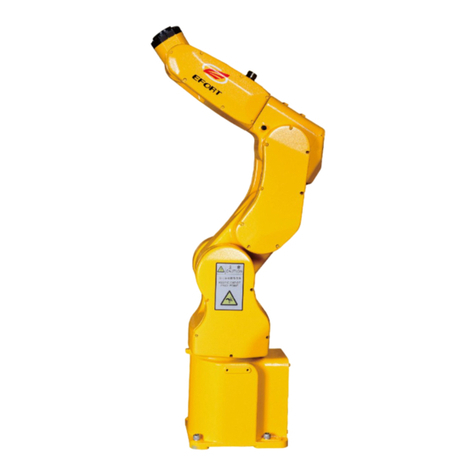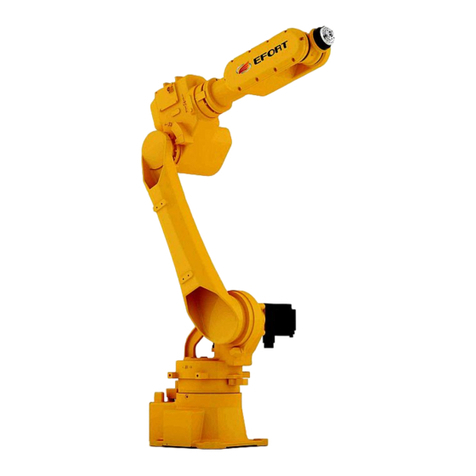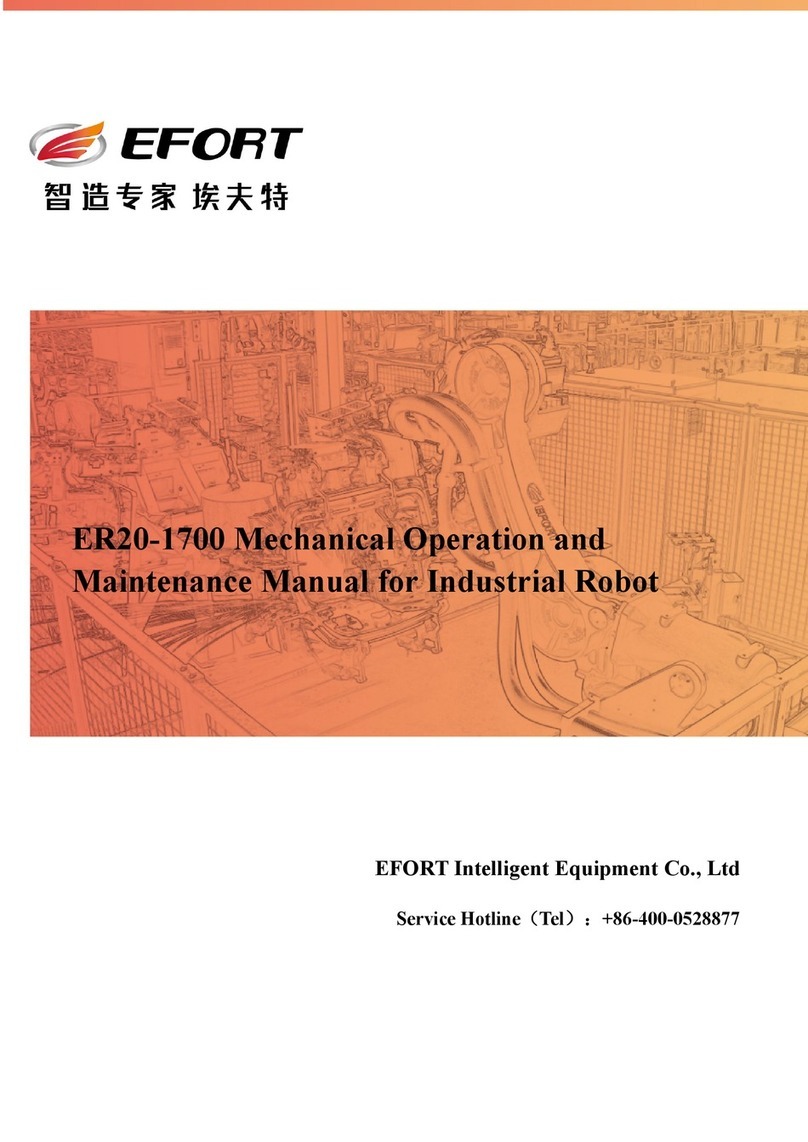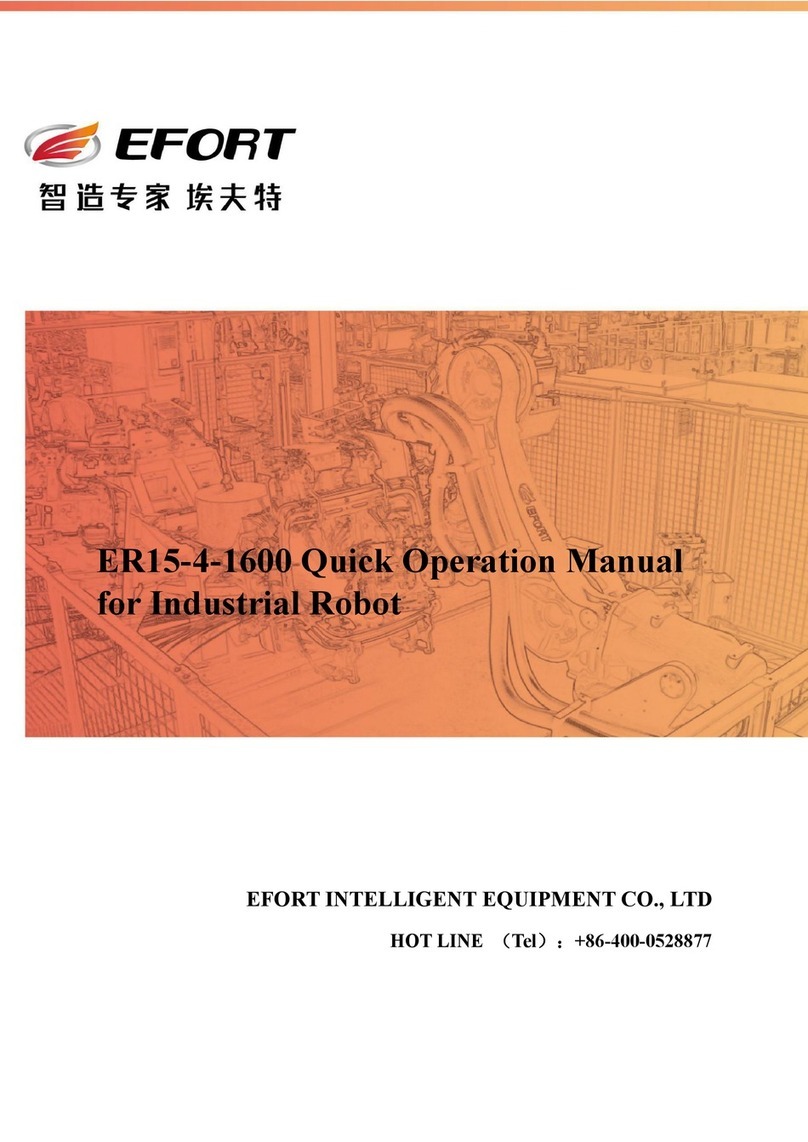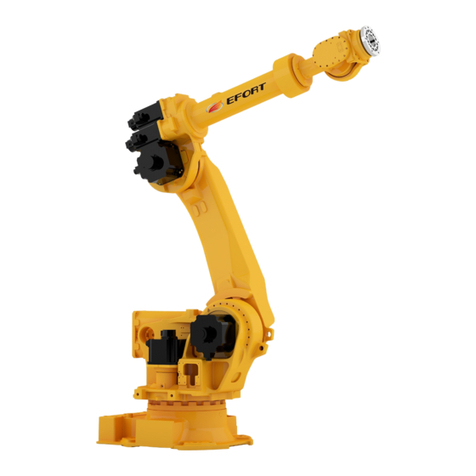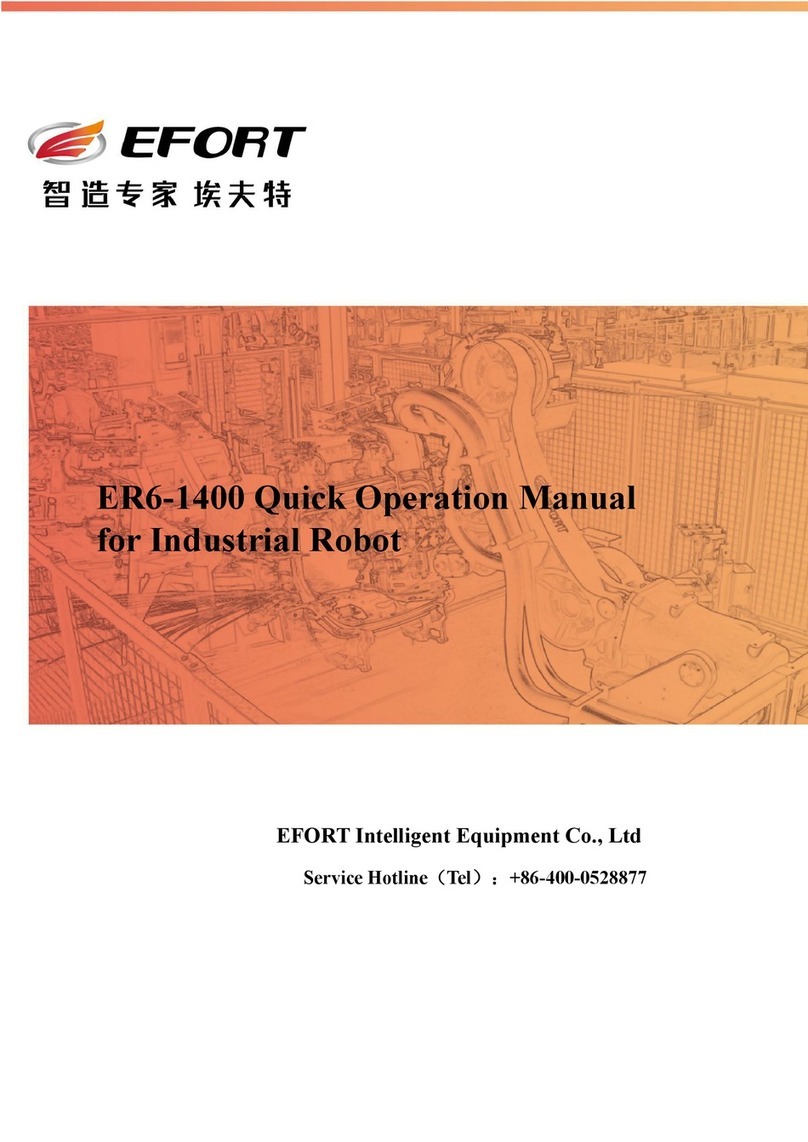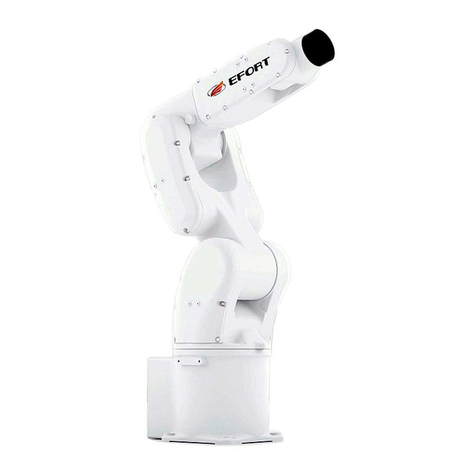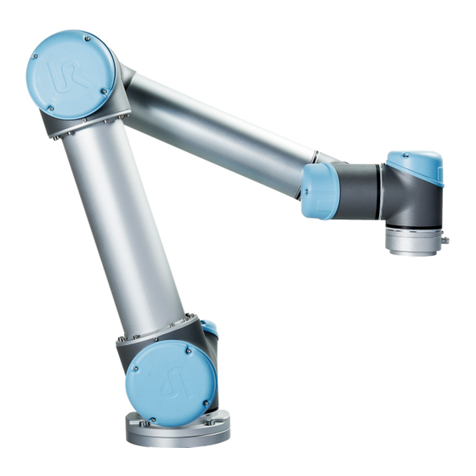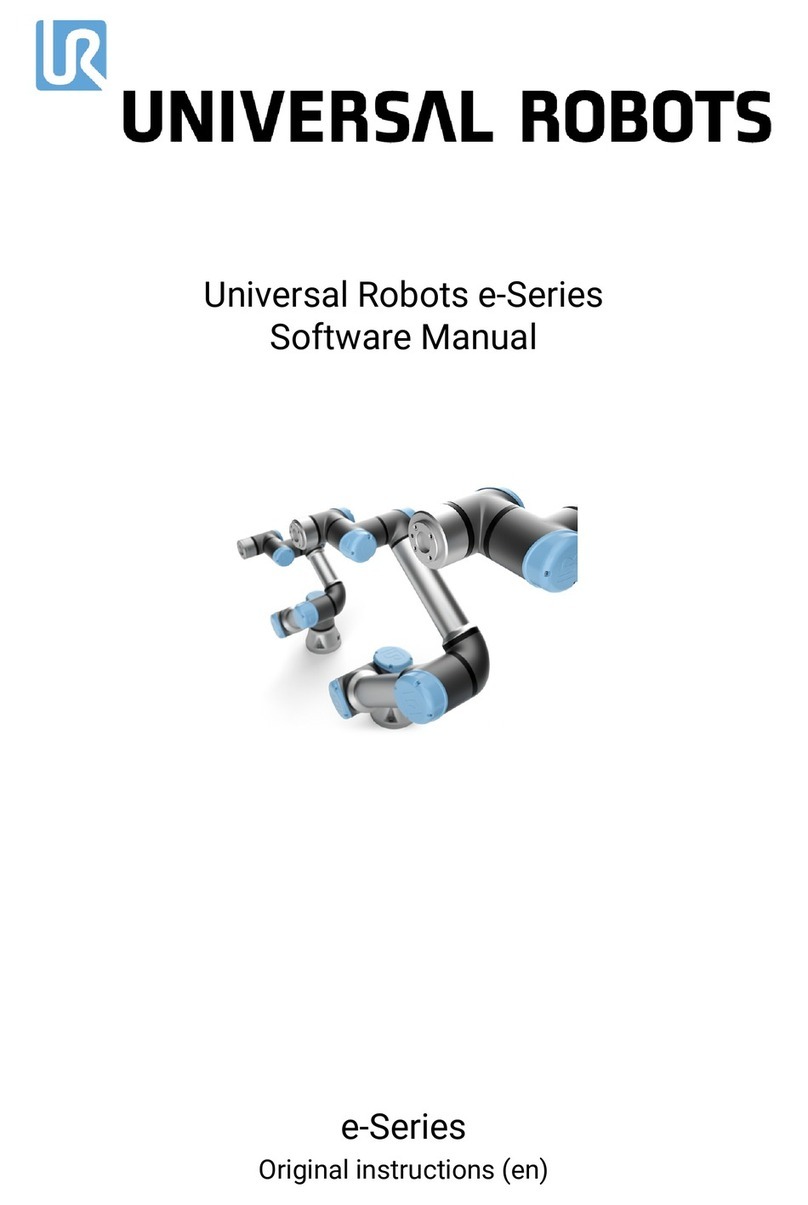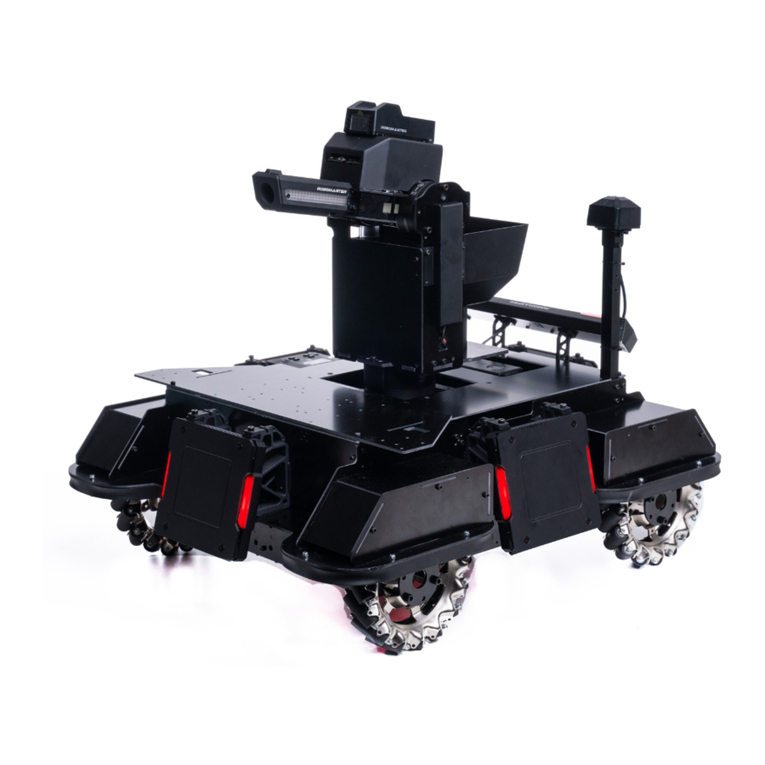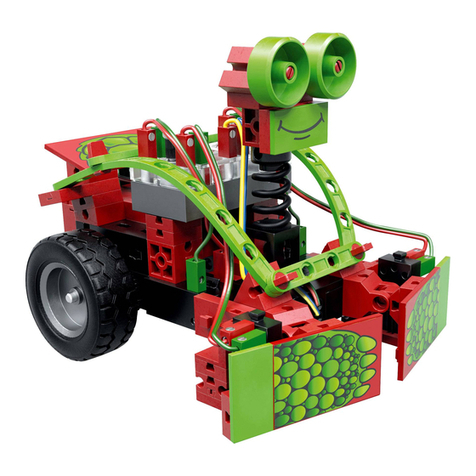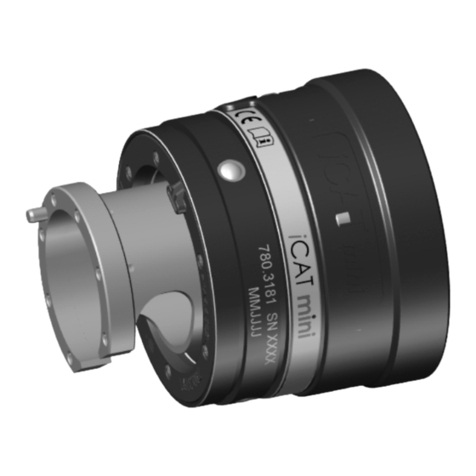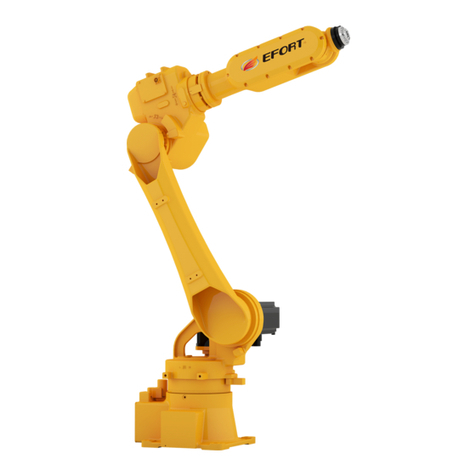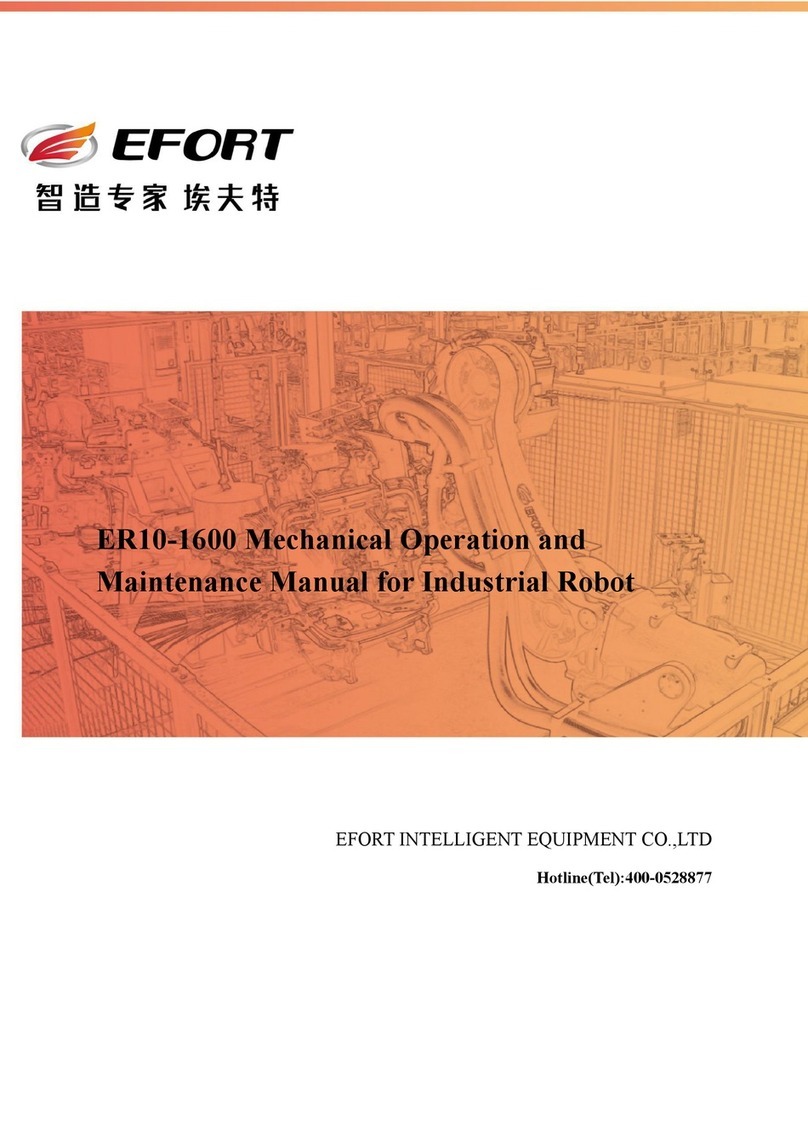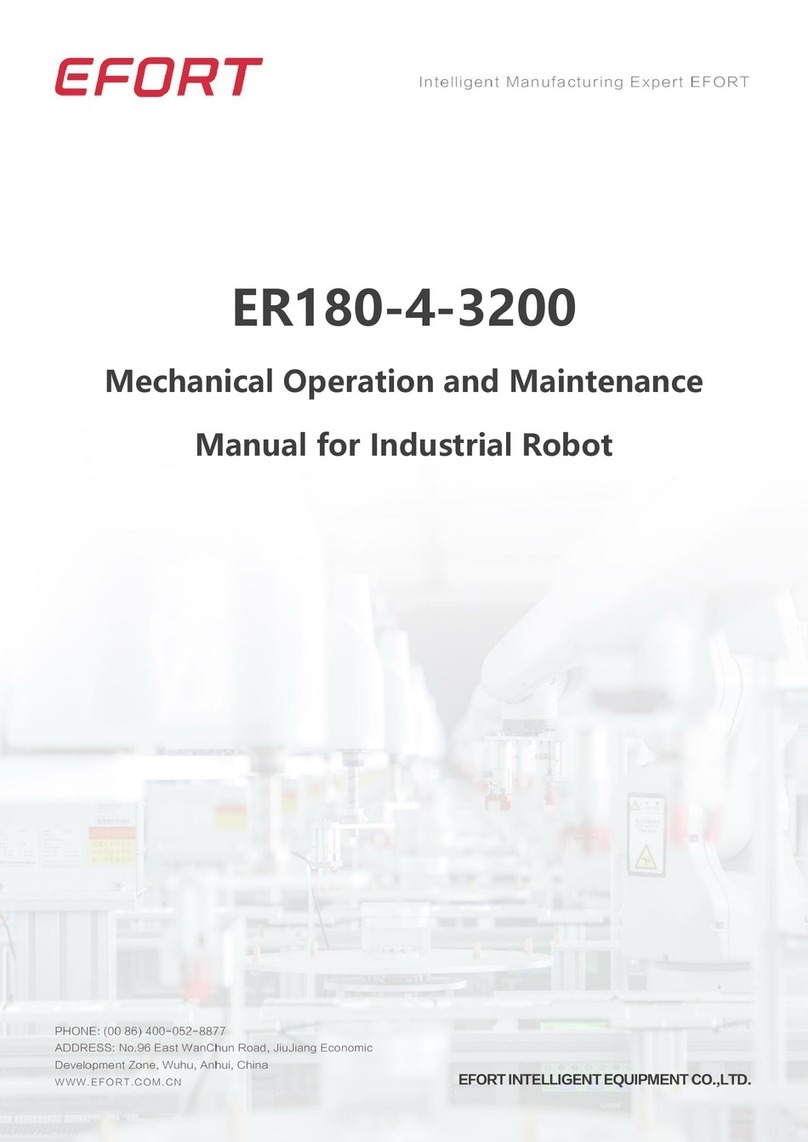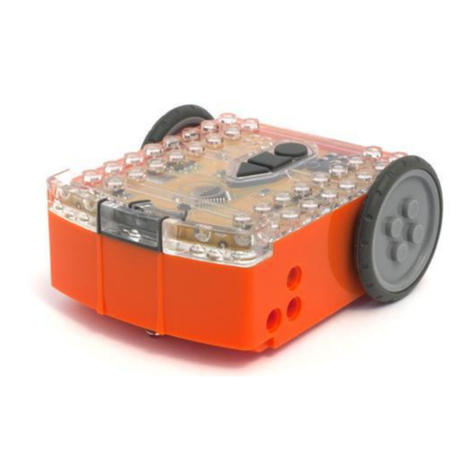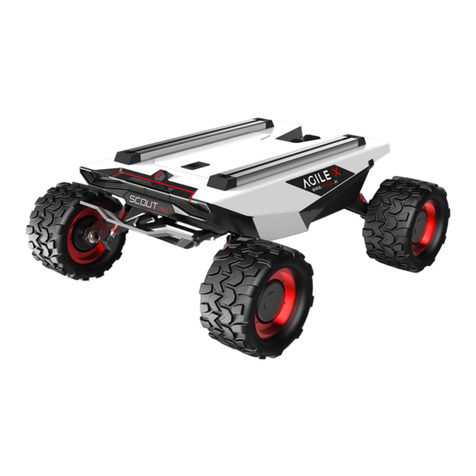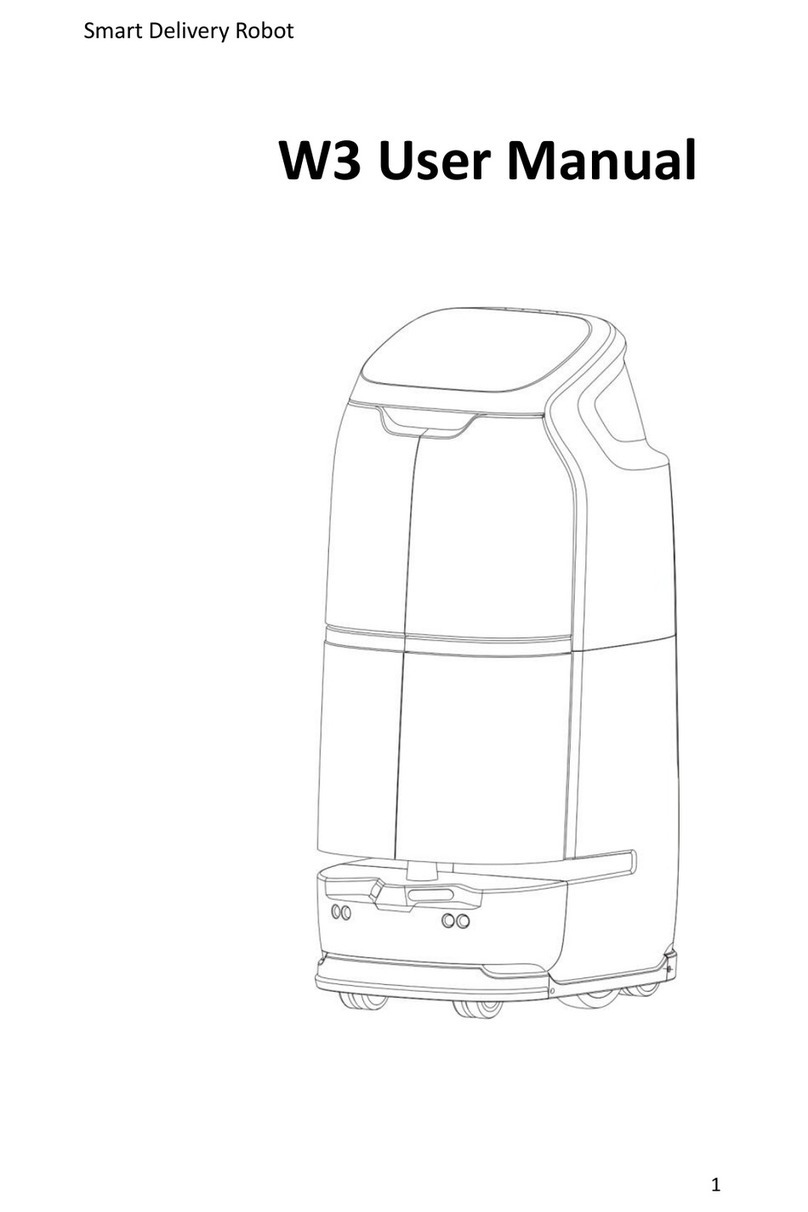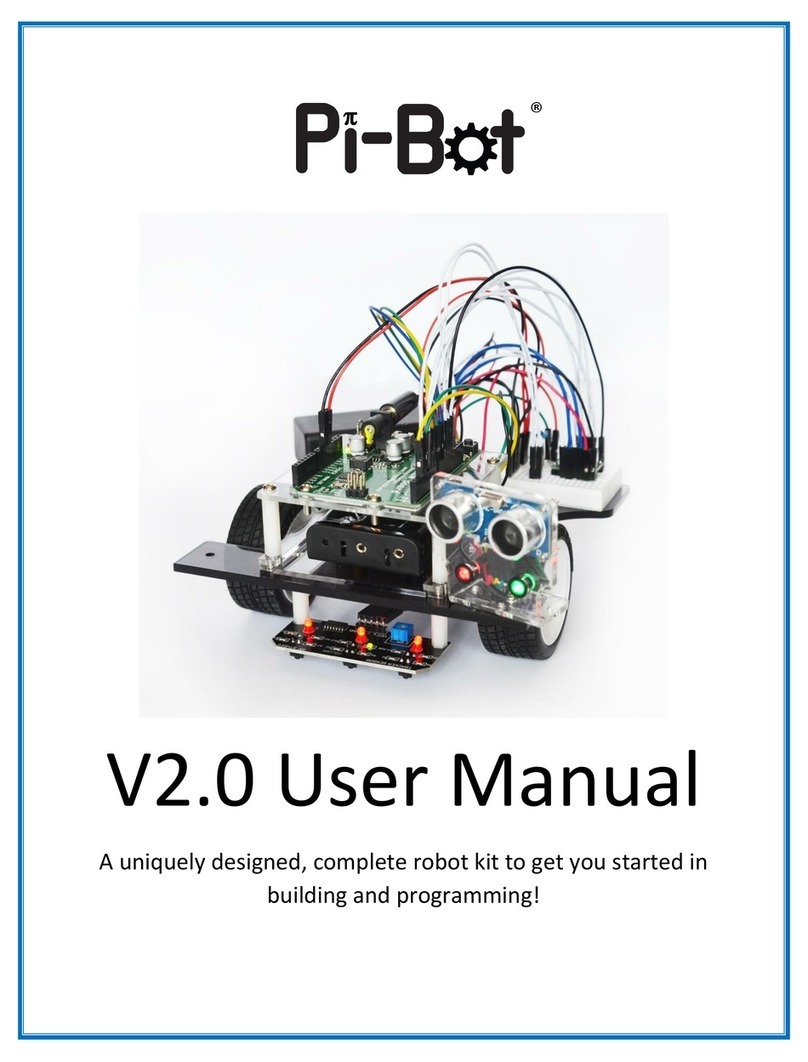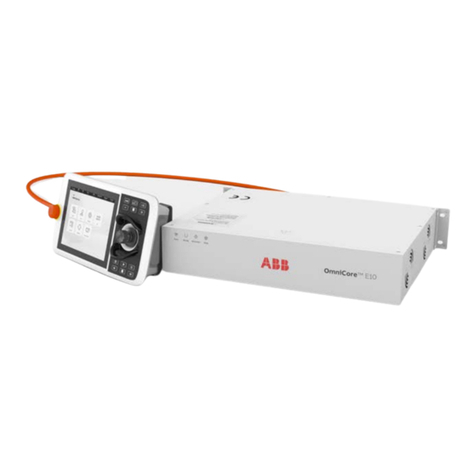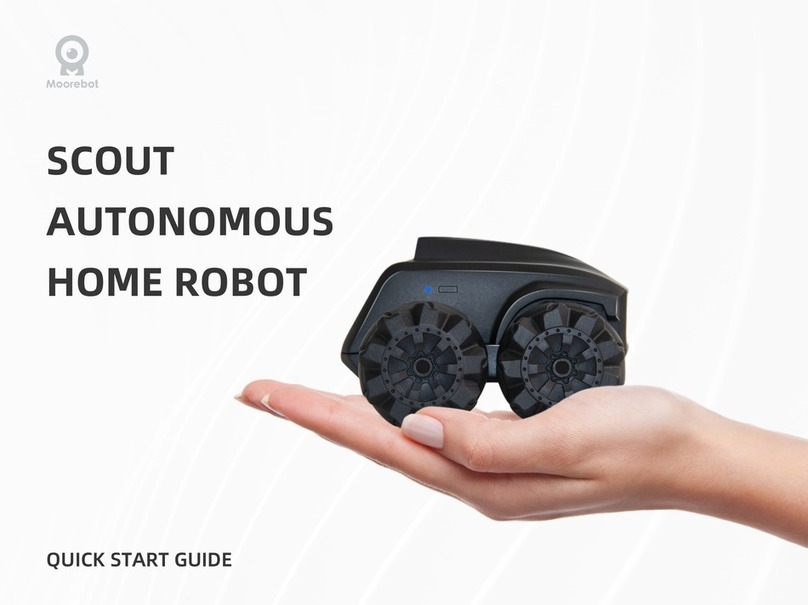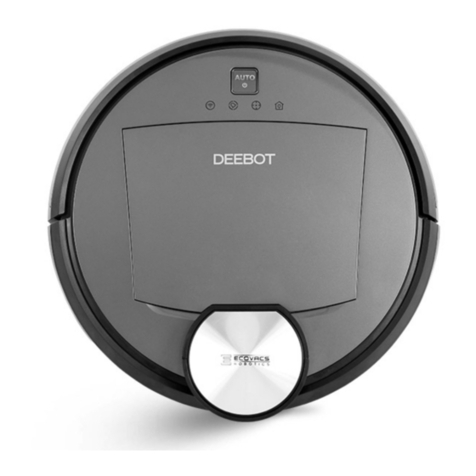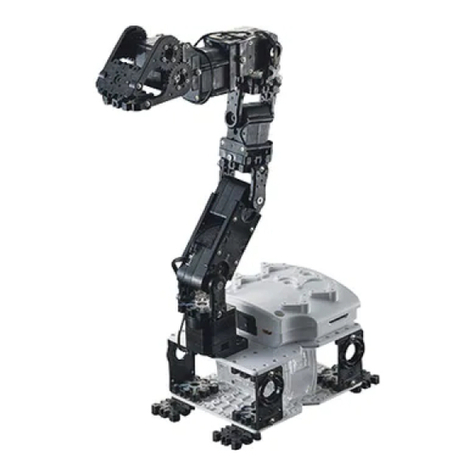
ER10-1600 Quick Operation Manual for Industrial Robot
24
Chapter One Safety
1.1 Safety Instructions
According to the national and local laws and regulations, great importance has been attached to safety
protection in the operation of an industrial robot.
The employer of the robot operator is responsible for the physical damage or property loss in case of
an accident. Therefore it is strongly recommended that an operator should fully understand the contents
described in this manual or elsewhere and abide by the health and safety regulations.
For safety reasons, it is the fundamental requirement to abide by the instructions described in this
manual and other manuals of EFORT. The manual serves as a general introduction to safety regulations
which does not take all the aspects into consideration. Therefore, it is highly important for an operator to
take preventative measures according to the application system and the work environment when operating a
robot.
An operator must read the following information carefully and pay special attention to the safety
measures described.
An EFORT industrial robot user should promise to abide by its national or regional safety laws and
regulations and to make sure that the necessary safety protection equipment is reasonably designed and
correctly installed. An operator should get familiarized with the operation procedures described in the
following documents:
ER Series Robot Safety Manual
Electrical Operation and Maintenance Manual for Small and Medium Payload Industrial Robot
ER Series Robot Operation Manual
Mechanical Operation and Maintenance Manual for ER Series Industrial Robot
Quick Start Manual for ER Industrial Series Robot
The quick start manual includes all the safety descriptions of the robot and controller. The robot
should be well designed and manufactured to ensure that it can enter all the required areas when it is
operated, tested or maintained. The robot should be able to enter the work areas freely if there is a
safety prevention frame. An operator should not be exposed in danger of slipping, stumbling or falling.
1.2 Safety Regulations
Prohibitions
1. Do not change or dissemble the protective equipment or safety equipment arbitrarily.
2. Do not touch a robot in case of waterlogging. Cut off the power and drain off the water.
3. The operation of an industrial robot must be performed by the professionals who have
received sufficient training and guidance and have read this manual thoroughly.
4. The space around the emergency stop equipment must be emptied in case of an
emergency.
5. Improper materials must not be processed with the robot and improper adjustment or
alteration is forbidden.
6. Those who have not been authorized or who have not received any professional training
